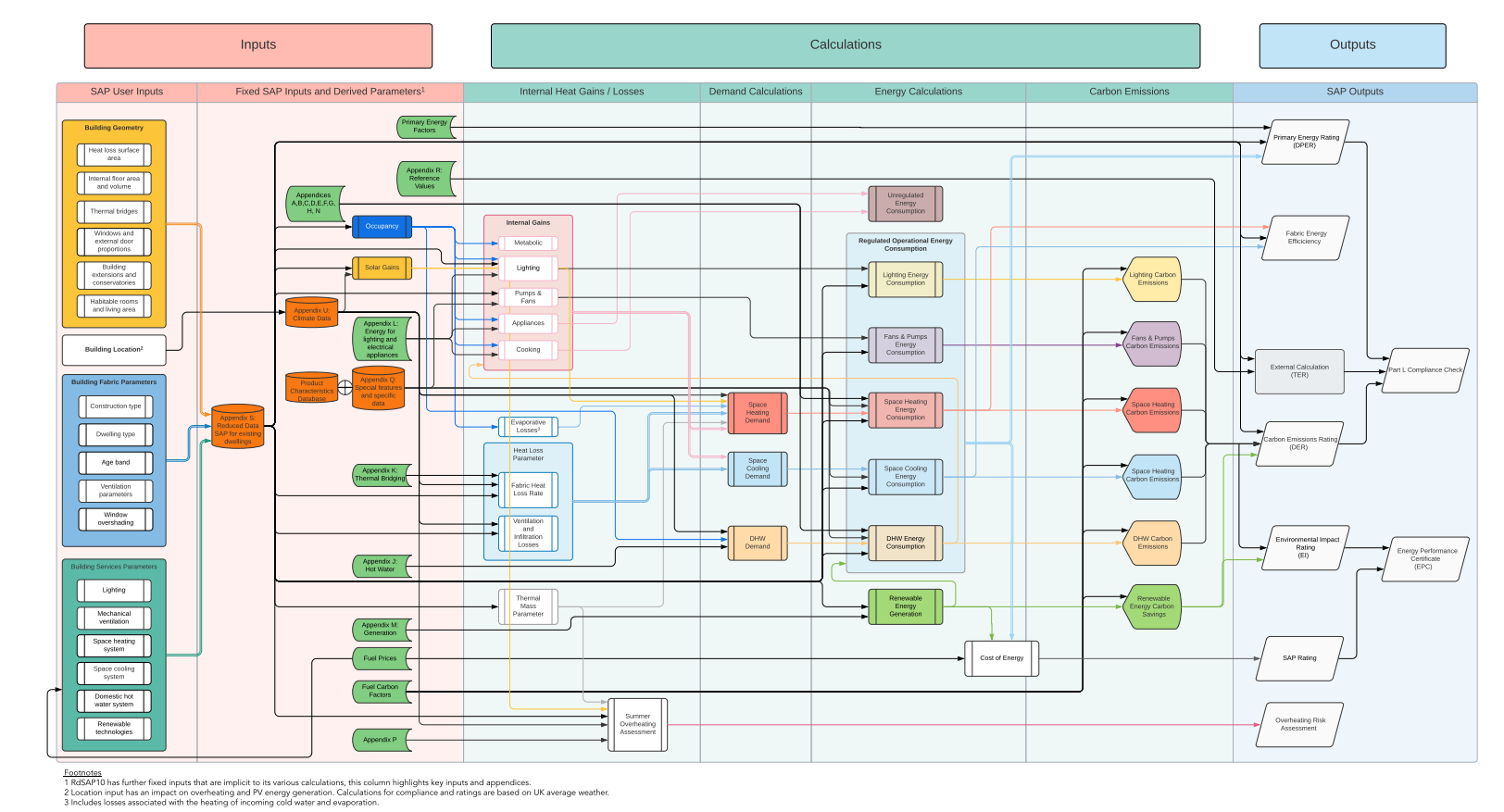Week Nineteen: open source energy models
So as I explained last week, this month I’ve been diving into the world of energy models. Specifically, I’ve been looking in depth at the Standard Assessment Procedure, which is the government’s energy model for regulating energy use in buildings. A simplified version of this model (called “the Reduced Data SAP”) is what sits behind the Energy Performance Certificates that are required whenever you want to sell a house (and which give your house an “A-G” eco-rating).
At their heart these are SAP is a fairly simple energy models. It attempts to calculate the cost, carbon and energy required to heat a house.
The high level equation that sits behind SAP is:
Total Heat Loss = [How well insulated the building is] × [Exposed area of the building's exterior] × [Temperature difference between the inside and the outside]
So while there isn’t anything terribly complicated, maths-wise (eg the model doesn’t take into account the shape of the building, and we don’t have any fluid dynamics equations), there is still a lot going on.

Here is the latest specification of the SAP model. It runs to almost 200 pages. Here’s a diagram of the components of the model.

There’s a lot of interactions between different parts of the model, and a lot of assumptions. If you’re a simple soul like me, this is quite a daunting task if you think that you might want to create a domestic energy modelling SaaS.
Open source software comes to the rescue.
But! This guy and a few other people, have spent a good part of the last 10 years putting this model into code with a project called OpenBEM. Here is a neat free web tool which provides a nice UI to the OpenBEM model and allows you to create an energy model of your house.
As I mentioned last week, I think there is potentially an important business in making it easier and cheaper to provide a useful simulations of how energy flows through ordinary people’s houses. I have been thinking that we could use OpenBEM as the energy model that would sit behind some of these products.
Unfortunately, the core OpenBEM model has been a bit unloved these last few years, as some of the maintainers of the project have gone to work on other (related things).
So that’s what I’ve been doing this week, trying to get my head round this model, and working out how I can use it to build a simple tool. Hopefully more details to follow on this next week.
See you next week!